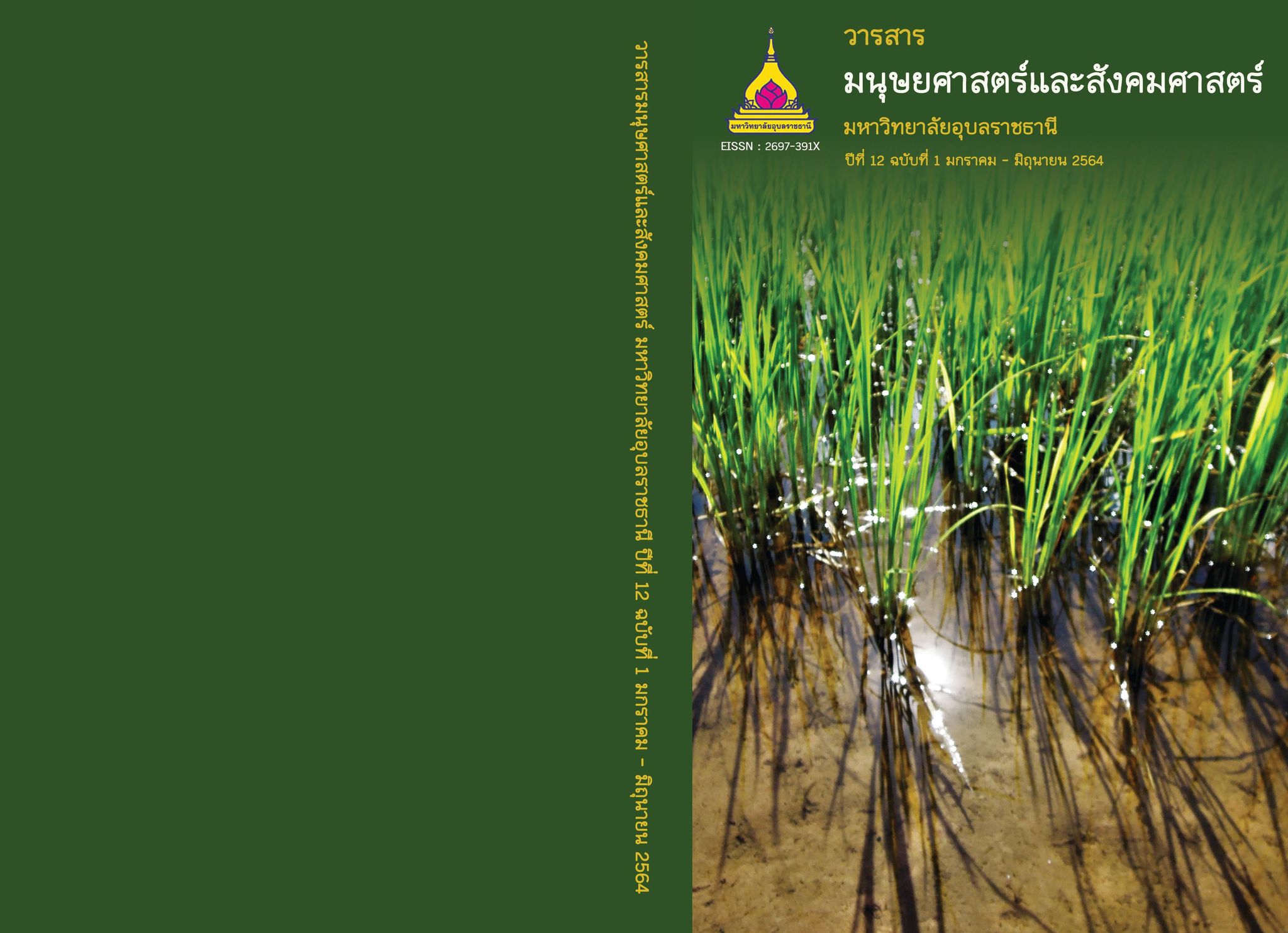การเรียนรู้ผ่านประสบการณ์: พื้นที่ปลอดภัยในการเรียนรู้
Main Article Content
บทคัดย่อ
การเรียนรู้ผ่านประสบการณ์ เป็นรูปแบบหนึ่งของการเรียนรู้ที่ได้รับการนิยมในอุดมศึกษา ความรู้สึกปลอดภัยที่จะพูด หรือ แสดงความรู้สึก ความคิดเห็นของผู้เรียนในชั้นเรียนมีความส าคัญในการเรียนรู้ผ่านประสบการณ์ บทความวิจัยเชิงคุณภาพนี้ มีวัตถุประสงค์เพื่อน าเสนอองค์ประกอบที่ส าคัญของพื้นที่ปลอดภัยที่สนับสนุนการจัดการเรียนรู้ผ่านประสบการณ์ และการเปลี่ยนแปลงในตัวผู้เรียนและผู้สอน ผู้ให้ข้อมูลประกอบด้วย อาจารย์ผู้สอน และ นักศึกษา เก็บข้อมูลโดยการสัมภาษณ์เชิงลึก และ สนทนากลุ่ม วิเคราะห์ข้อมูล โดยการวิเคราะห์ เนื้อหาผลการศึกษาพบว่า 1) ผู้สอนใช้วิธีหลากหลายในการสร้างพื้นที่ปลอดภัยในการเรียนรู้ เช่น การจัดที่นั่งแบบวงกลม การฟังด้วยหัวใจ และ การก าหนดข้อตกลงในการเรียน 2) ผู้เรียน เข้าใจตัวเองและผู้อื่น กล้าแสดงออก สามารถน าความรู้ไปใช้นอกห้องเรียนได้ และ 3) ความสัมพันธ์ระหว่างผู้สอนและผู้เรียนใกล้ชิดกัน สถาบันการศึกษาควรสนับสนุนโครงการ พัฒนาทักษะการจัดการเรียนรู้ผ่านประสบการณ์ให้กับผู้สอน รวมถึงสถานที่ในการเรียนรู้ให้เอื้อต่อการจัดการเรียนการสอนผ่านประสบการณ์
Article Details
บทความที่ได้รับการตีพิมพ์เป็นลิขสิทธิ์ของวารสารมนุษยศาสตร์และสังคมศาสตร์ มหาวิทยาลัยอุบลราชธานี
ข้อความที่ปรากฏในบทความแต่ละเรื่องในวารสารวิชาการเล่มนี้เป็นความคิดเห็นส่วนตัวของผู้เขียนแต่ละท่านไม่เกี่ยวข้องกับมหาวิทยาลัยอุบลราชธานี และคณาจารย์ท่านอื่นๆในมหาวิทยาลัยฯ แต่อย่างใด ความรับผิดชอบองค์ประกอบทั้งหมดของบทความแต่ละเรื่องเป็นของผู้เขียนแต่ละท่าน หากมีความผิดพลาดใดๆ ผู้เขียนแต่ละท่านจะรับผิดชอบบทความของตนเองแต่ผู้เดียว
เอกสารอ้างอิง
Bell, AL. 2007. “Theoretical foundations for social justice education”. In Teaching for diversity and social justice. Teaching for diversity and social justice, edited by A. Maurianne Bell, B Lee, and P. Griffin. New York: Taylor & Francis Group.
Clapper, TC. 2010. “Creating the safe learning environment” [internet]. Paial Newsletter. 3(2). [cited 2018 September 15]. Available from:https://www.researchgate.net/publication/257835881_Creating_the_safe_learning_environment.
Coker, JF.; Heiser, E.; Taylor, L.; and Boo, C. 2017. “Impacts of experiential learning depth and breadth on student outcomes”. Journal of Experiential Education. 40(1): 5-23.
Girvan, C.; Conneely, C; and Tangney, B. 2016. “Extending experiential learning in teacher professional development”. Teaching and Teacher Education. 58: 129-39. Khuankaew, O. 2012. Ways of changing. Bangkok: Duantula Press. (in Thai)
Kisfalvi, V. and Oliver, D. 2015. “Creating and maintain a safe space in experiential Learning”. Journal of Management Education. 39(6): 713-740.
Olympic Training and Consulting and Consulting Ltd. “Self-study course for trainers of intercultural mediators. Module 2. Adult training methodology and techniques”[internet]. [cited 2018 November 15]. Available from:http://www.mediation-time.eu/images/TIME_O5_Trainer_Course_Module_2.pdf.
Palis, AG.and Quiros, PA. 2014. “Adult learning principles and presentation pearls”.Middle East African Journal of Ophthalmology. 21(2): 114-122.
Puranan, S., Sungtong, E., Kerdtip, C. 2016. “Transformative learning and humanized educare development of teachers in the 21st Century”, Journal of Education Prince of Songkla University, 27(1): 13-26.(in Thai)
Schwartz, M. 2012. Best practice in experiential learning. [internet]. [cited 2018 November 23]. Available from: https://www.ryerson.ca/content/dam/lt/resources/handouts/ExperientialLearningReport.pdf.


